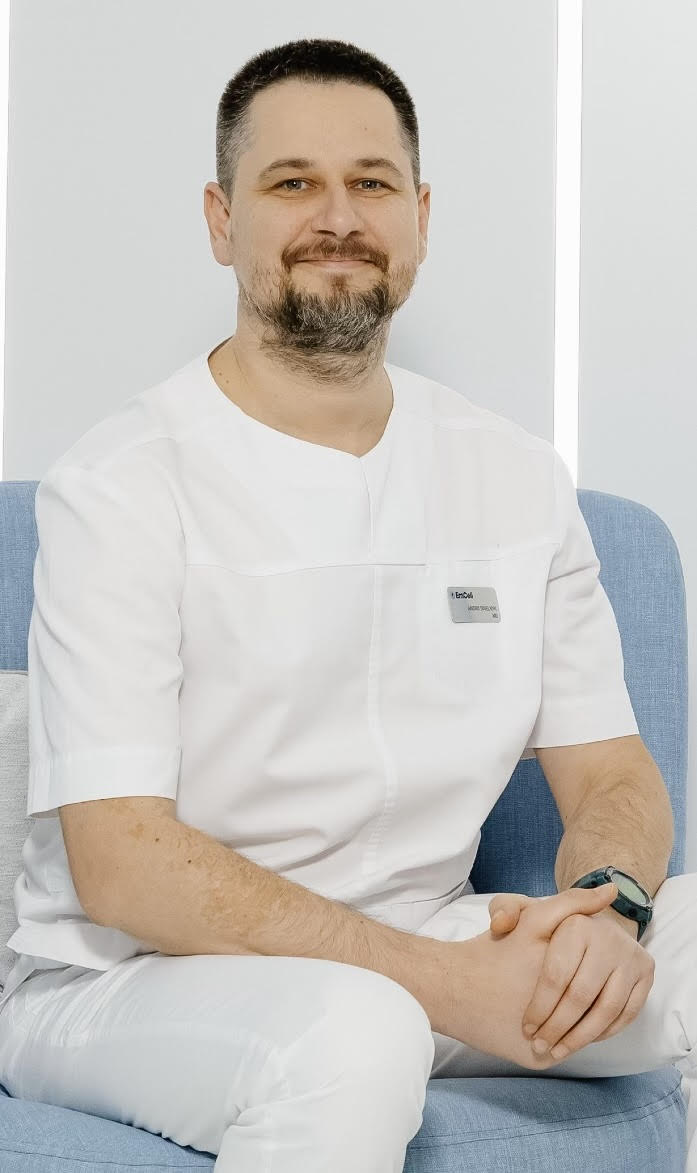AUCTORES
Globalize your Research
Case Report | DOI: https://doi.org/10.31579/1.10001
*Corresponding Author: Deanna Jung, Department of Emergency medicine, California State University, Fullerton. E-mail: [email protected].
Citation: Deanna Jung, Acute Emergency: A Case Report of a Carotid Artery Dissection, J Emergency and Critical Care, Doi: http://dx.doi.org/ 10.31579/1.10001.
Copyright: © A Case Report of a Carotid Artery Dissection, J Emergency and Critical Care, Doi: http://dx.doi.org/ 10.31579/1.10001.
Received: 06 June 2018 | Accepted: 09 July 2018 | Published: 16 July 2018
Keywords: Carotid hematoma, carotid artery dissection, surgical emergency, ENT.
Background: Carotid hematoma is a rare occurrence in critically ill hospitalized patients. However, there is a four percent chance of development of a carotid hematoma leading to a carotid artery dissection [11]. Associated with ear, nose, and throat (ENT) surgeries.
Methods: Case study reviewing a patient who developed a carotid hematoma, which led to carotid artery dissection and required emergency surgery. The patient’s hospital course including lifesaving interventions is discussed.
Summary: In order to reduce mortality in patients who develop this complication, early recognition, airway management, medical treatment, and surgery are critical to survival.
Carotid hematoma is a rare but significant occurrence in critically ill hospitalized patients [9]. The incidence peaks in the fifth decade of life and is equally represented in both sexes [7]. However, there is a four percent chance of ear, nose, and throat (ENT) surgeries in which a carotid hematoma may lead to a carotid dissection from trauma, tumor, and friability of the artery [11]. Carotid artery dissection occurs in approximately 2.6 cases per 100,000 [7]. In order to reduce mortality among this patient population, early recognition, airway management, medical treatment, and surgery are critical to survival [9].
This case study highlights this rare complication: a carotid dissection, which occurred following a laparoscopic neck dissection surgery. A carotid hematoma resulted from a tear during surgical dissection of a neck tumor. After dissection of the carotid artery, aggressive and emergency treatment and surgical intervention ensued. The hospital course requiring lifesaving interventions is discussed, including pathophysiology of carotid hematoma formation and dissection, clinical features, diagnosis, and treatment.
The development of a carotid hematoma is strongly correlated with a hemorrhage within the wall of the vessel, typically localized to the medial layer [12]. There are primarily two sources for the hemorrhage: an intimal tear dissecting into the media or a primary hemorrhage of the vasa vasorum into the media [12]. Outcomes of the hematoma are based on the location and the extent of hemorrhage. Hematomas can lead to narrowing of the intimal wall, occlusion of the vessel, dilatations of the vessel, or pseudoaneurysm formation [12]. This alteration to the vessel wall becomes a thrombogenic surface on which platelets aggregate causing a cascade of events leading to thrombus or hematoma formation [7].The timing from initial intimal tear to formation of a hematoma leading to dissection is highly variable in different individuals, which may explain the delayed onset and variety of presentations and symptoms [12].
Factors which may predispose an individual to a carotid hematoma leading to dissection include: tumors, radiation near the vessel, previous surgery, positioning during intubation or extubation, chronic infection, accidental trauma, Marfan syndrome, coronary artery disease, uncontrolled hypertension, predisposing blood dyscrasias, intimal defects, or they may occur spontaneously[3]. The unusual stress or injury to the vessel causes a collection of blood and platelet attraction and aggregation. This is a precipitating factor leading to a hematoma formation. The additional damage caused by the hematoma can lead to a pseudoaneurysm, an outpouching from the original vessel, stenosis, or additional strain ultimately causing an intimal tear or complete dissection [12].
Radiation may cause fibrosis of the vessel and surrounding tissues precipitating friability leading to activation of the coagulation cascade resulting in hematoma formation [5]. Tumors and previous surgery with manipulation near or including the vessel can cause occlusion of the vessel invoking inflammation and aggregation of platelets at the site of injury [7].
Once a hematoma has formed in the vessel, the vessel is compromised and susceptible to further injury. The events inducing carotid dissection are suggestive of the velocity of blood flow through the vessel, thrombogenesis, and the extent of the damage that the vessel undergoes [8].
Common clinical symptoms which can occur with a carotid artery dissection consist of: pain at the site upon initial tear, headache or head pain, development of changes in level of consciousness, a transient loss of vision also known as amaurosis fugax, transient ischemic attack (TIA), stroke, or suffocation [12]. Additional symptoms, which may be present, also include: neck swelling, dyspnea, and orthopnea [6]. Ipsilateral Horner’s syndrome may also be present upon assessment of carotid artery dissection [15]. Horner’s syndrome includes miosis ipsilaterally to the dissection, sluggish pupillary reflexes, sinking of the eye into the cavity also known as enophthalmos, a vascular headache, and moderate eyelid ptosis caused by carotid dissection [15].
The diagnosis of carotid artery dissection is based on the clinical presentation, patient history, and angiography.
The patient’s past and current medical history are valuable factors, which can help narrow the differential. A patient with a history of uncontrolled hypertension would have had recurrent damage to the vessel leading to increased velocity of blood flow contributing to vascular wall abnormalities [8]. After surgical removal of a tumor that is in close proximity to the vessel or radiation therapy to the site of tumor growth, the vessel is predisposed to fragility and friability.
There are several diagnostic tests that can be performed to identify the presence of a carotid artery dissection. These include: ultrasonography, computerized tomography (CT) and CT angiography (CTA) [12]. The gold standard, however, is magnetic resonance imaging (MRI), or magnetic resonance angiography (MRA) [12].
Ultrasound has only been shown to be approximately 75-85% predictive of dissections and percentages of specificity are unknown [1]. The use of ultrasonography fails to detect carotid dissection by location alone. The internal carotid artery lies behind bones and this increases the difficulty of detection via ultrasonography [13].
The use of CT and CTA are used more specifically helpful in certain populations where an MRI or MRA is contraindicated, such as in those with pacemakers, retained foreign objects (metal, screws or plates), or shunts implanted during elective surgeries [14]. Magnetic resonance angiography at this time remains the best method for exclusion of carotid artery dissection [14].
Magnetic resonance imaging and MRA are more commonly being used to diagnose carotid artery dissection. In carotid artery dissection MRA displays hyperdense signals on T1 weighted images [15]. The use of MRI may be restricted in use to those patients who are not claustrophobic [12]. Allergies to contrast may also preclude both CTA and MRA [13]. The sensitivity of these exams is highest two days after the initial dissection [15]. Both MRI and MRA assist in the determination of the age of the hematoma by the signal intensities seen on both T1 and T2 images [4]. This may also determine the further course of action. If the dissection appears to be long standing then medical management may be considered, whereas in an acute dissection more aggressive therapy would need to be indicated [4].
Acute carotid artery dissection constitutes a medical emergency and requires airway management and immediate surgical repair [5]. As in most emergencies, airway management is the first priority [9]. In the case of carotid dissection, it is especially critical due to the location of the lesion as it is life threatening and because failure to secure the airway prevents further definitive treatment [12]. Blood pressure management and blood product administration may need to be given to maintain a homeostatic euvolemic state depending upon the severity of the dissection.
Blood pressure management is critical to the viability of organs being perfused as well as to prevent continued bleeding and further dissection of the vessel [9]. Blood pressure management is individualized based on the presentation of the patient and the symptoms [4]. The treatment and management of blood pressure may be variable from using vasopressive medications for hypertension to the use of blood pressure lowering medications for hypotension [9]. A balance between adequate vital organ perfusion and limiting the dissection must be reached so that latent effects of dissection are not seen later after repair [9].
The mainstay of treatment in a dissecting carotid artery includes: control of embolization and prevention of further thrombus formation [7]. Depending upon the size and severity of the hematoma and dissection, either medical management or surgical intervention may be appropriate.
Medical management is comprised of antiplatelet therapy with or without anticoagulation therapy [7]. Antiplatelet and anticoagulation therapy is controversial in the use of carotid dissection [7]. They may be part of the medical management started one to two days after surgical repair of the dissection to prevent further thrombus formation [7]. Patients without an acute dissection are typically monitored for disease progression with frequent diagnostic tests such as an MRI. However, if further dissection occurs or increased neurological deficits are apparent then emergency repair of the vessel is needed [7]. This may increase the degree of complexity of surgical dissection around the dissecting vessel.
Surgical repair may generate inflammation at the site of repair. Repair may induce further platelet aggregation, contributing to postsurgical complications [7]. Therefore, symptomatic presentation and diagnostic laboratory values are critical to initial and continued management of the patient. Further disease progression with hemodynamic instability or deteriorating neurological symptoms would necessitate emergency surgical intervention [7].
Management following surgery:
Prognosis is determined by control of hemostasis and recanalization of the dissected artery [7]. Carotid artery dissection results in approximately 40% mortality [10]. Following successful surgical intervention patients need to be admitted to an intensive care unit. Maintenance of airway management and hemodynamic stabilization are key components to the postoperative care.
T.C. is a 54-year-old male who required a neck dissection for removal of a malignant tumor. Despite his surgeon’s advice that an open neck dissection would allow better access and limited risk, T.C. requested the use of a laparoscopic approach because it would provide a more aesthetically pleasing result. After explaining the risks and benefits of the laparoscopic surgery, the surgeon obtained informed consent. Upon arrival to the surgical intensive care unit (SICU) after surgery, T.C. was intubated with a 7.5 French endotracheal tube (ETT) and sedated with a midazolam drip. No vasopressive management was needed at the time of admission. He was hemodynamically stable and all vital signs were within normal limits. His wife and her best friend were at the bedside.
Less than four hours postoperatively, a small slow trickle of blood appeared out of T.C.’s right nostril. The ear, nose, and throat (ENT) resident was paged to inform him of the change in status.
Upon examination of T.C., profuse amounts of blood were being expelled via T.C.’s bilateral nares and out of his ETT without resolve. T.C. was found to be in distress with continued profuse bleeding. During this time T.C. became hemodynamically unstable and the initiation of vasopressive treatment began. Eight units of uncrossed matched packed red blood cells (PRBC) and platelets were given intravenously prior to surgical intervention. A Propofol intravenous infusion was started to control the violent coughing and gagging. Suctioning of bilateral nares and ETT inline suctioning were continuously performed. T.C. was subsequently transported to the operating room (O.R.).
T.C. has a history of malignant neoplasm of his tongue with involvement of his neck. He had previously undergone radiation to shrink the tumor prior to surgical removal. He has a 30-pack history of tobacco use including cigarettes and cigars. He has no other significant past history or family history.
Upon examination under anesthesia in the O.R. a hematoma and right carotid artery dissection were found to be the sources of bleeding. An emergency radical neck dissection, tracheostomy placement, and evacuation of hematoma were successfully completed. A total of six additional units of PRBCs and three units of platelets were infused during surgery. A total of 1500 mls of blood loss was estimated during the surgical procedure. An arterial line placed in his right radial artery, a triple lumen central line in his left subclavian vein, and central venous pressure monitoring were placed in the O.R.
Immediately after emergency surgery T.C. was transported back to his SICU room. He was hemodynamically stable at this time. He remained on a Propofol intravenous infusion for sedation, fentanyl drip for pain control and phenylephrine for blood pressure control. He was reconnected to the ventilator and placed on assist control (A/C) with a rate of 12, tidal volume (Vt) 550, pressure support (PS) of 10 and peep of 5. He was to remain sedated and on the ventilator until the next morning.
Serial labs were drawn on T.C. every four hours to include a complete blood count (CBC), basic metabolic panel (BMP), magnesium, phosphorus, ionized calcium, arterial blood gases, and lactic acids. Lab values were not able to be accessed during review and case presentation and have been omitted for this purpose. Assessment of the surgical site and prior area of hematoma formation were to be completed hourly for the first twenty-four hours after surgery.
On postoperative day two, phenylephrine was weaned off. The mean arterial pressure (MAP) goal of 65-70mm Hg was maintained over the course of twenty-four hours. T.C. remained stable throughout the remainder of the day. His central venous pressure fluctuated between eight and ten mmHg. During this time anticoagulation therapy was started with heparin 5000 units subcutaneously every twelve hours and a sequential compression device (SCD) was applied and maintained for 22 out of 24 hours a day.
On postoperative day three Propofol was weaned off. Ventilator settings remained stable adequately ventilating and oxygenating T.C. The site of hematoma formation and carotid artery dissection were without edema, redness, soft to touch, and without indications of hematoma formation. His CVP fluctuated between six to eight mmHg.
On postoperative day six the patient was transferred to the step-down unit (SDU) where he stayed until discharge without the need of additional emergency management until day fifteen. T.C. was discharged home fully recovered and decannulated.
Initial Postoperative Problems
Carotid Artery Dissection:
Dissection of a carotid artery is not a common occurrence [9]. Approximately only 2.6 cases out of 100,000 result in carotid dissection (Jaipersad et al., 2012). The most common cause of mortality is the lack of ability to correctly identify the diagnosis and inadequate airway management [15]. Less than four hours postoperatively from T.C.’s initial laparoscopic neck dissection, he began to bleed profusely. The severity of T.C.’s blood loss prior to emergency surgery was concerning. Although he had an ETT in place, a secure airway was not maintained until anesthesia and a paralytic agent were given prior to the commencement of surgery. He required multiple vasopressors prior to emergency surgery and rapid blood product administration. Based on the knowledge of the attending ENT physician who had prior experience as a resident, he hypothesized the patient was having symptoms of a ruptured carotid hematoma with possible carotid artery dissection.
T.C. was a significant case of carotid artery dissection and hematoma formation. The initial emergency surgery was successful. His postoperative course was without additional need of emergency management. The tear in the intimal vessel led to hematoma formation and dissection. Fundamental to T.C.’s success was expeditious assessment, airway management, and emergency surgical management. While angiography may be the gold standard to detect dissection, time was of the essence, and this could not safely be performed. By performing an open radical neck dissection, the carotid artery was identified, and diagnosis of a hematoma and carotid artery dissection were made quickly.
Carotid artery dissection is a rare but significant clinical occurrence in critically ill hospitalized patients occurring both spontaneously and traumatically [9]. Assessment of preoperative risk factors, assessment of potential complications throughout the hospitalization, and communication are instrumental in the continuum of care for patients undergoing tumor removal by neck dissection whether the repair is performed laparoscopically or with open surgical intervention. Early diagnosis, airway management, diagnostic interventions, and emergency surgery are essential to decrease mortality associated with carotid artery dissection and improve patient outcomes [9]. Successful lifesaving resuscitation measures are dependent upon early recognition and facilitation of prompt treatment.
Clearly Auctoresonline and particularly Psychology and Mental Health Care Journal is dedicated to improving health care services for individuals and populations. The editorial boards' ability to efficiently recognize and share the global importance of health literacy with a variety of stakeholders. Auctoresonline publishing platform can be used to facilitate of optimal client-based services and should be added to health care professionals' repertoire of evidence-based health care resources.

Journal of Clinical Cardiology and Cardiovascular Intervention The submission and review process was adequate. However I think that the publication total value should have been enlightened in early fases. Thank you for all.

Journal of Women Health Care and Issues By the present mail, I want to say thank to you and tour colleagues for facilitating my published article. Specially thank you for the peer review process, support from the editorial office. I appreciate positively the quality of your journal.
Journal of Clinical Research and Reports I would be very delighted to submit my testimonial regarding the reviewer board and the editorial office. The reviewer board were accurate and helpful regarding any modifications for my manuscript. And the editorial office were very helpful and supportive in contacting and monitoring with any update and offering help. It was my pleasure to contribute with your promising Journal and I am looking forward for more collaboration.

We would like to thank the Journal of Thoracic Disease and Cardiothoracic Surgery because of the services they provided us for our articles. The peer-review process was done in a very excellent time manner, and the opinions of the reviewers helped us to improve our manuscript further. The editorial office had an outstanding correspondence with us and guided us in many ways. During a hard time of the pandemic that is affecting every one of us tremendously, the editorial office helped us make everything easier for publishing scientific work. Hope for a more scientific relationship with your Journal.

The peer-review process which consisted high quality queries on the paper. I did answer six reviewers’ questions and comments before the paper was accepted. The support from the editorial office is excellent.

Journal of Neuroscience and Neurological Surgery. I had the experience of publishing a research article recently. The whole process was simple from submission to publication. The reviewers made specific and valuable recommendations and corrections that improved the quality of my publication. I strongly recommend this Journal.

Dr. Katarzyna Byczkowska My testimonial covering: "The peer review process is quick and effective. The support from the editorial office is very professional and friendly. Quality of the Clinical Cardiology and Cardiovascular Interventions is scientific and publishes ground-breaking research on cardiology that is useful for other professionals in the field.

Thank you most sincerely, with regard to the support you have given in relation to the reviewing process and the processing of my article entitled "Large Cell Neuroendocrine Carcinoma of The Prostate Gland: A Review and Update" for publication in your esteemed Journal, Journal of Cancer Research and Cellular Therapeutics". The editorial team has been very supportive.

Testimony of Journal of Clinical Otorhinolaryngology: work with your Reviews has been a educational and constructive experience. The editorial office were very helpful and supportive. It was a pleasure to contribute to your Journal.

Dr. Bernard Terkimbi Utoo, I am happy to publish my scientific work in Journal of Women Health Care and Issues (JWHCI). The manuscript submission was seamless and peer review process was top notch. I was amazed that 4 reviewers worked on the manuscript which made it a highly technical, standard and excellent quality paper. I appreciate the format and consideration for the APC as well as the speed of publication. It is my pleasure to continue with this scientific relationship with the esteem JWHCI.

This is an acknowledgment for peer reviewers, editorial board of Journal of Clinical Research and Reports. They show a lot of consideration for us as publishers for our research article “Evaluation of the different factors associated with side effects of COVID-19 vaccination on medical students, Mutah university, Al-Karak, Jordan”, in a very professional and easy way. This journal is one of outstanding medical journal.
Dear Hao Jiang, to Journal of Nutrition and Food Processing We greatly appreciate the efficient, professional and rapid processing of our paper by your team. If there is anything else we should do, please do not hesitate to let us know. On behalf of my co-authors, we would like to express our great appreciation to editor and reviewers.

As an author who has recently published in the journal "Brain and Neurological Disorders". I am delighted to provide a testimonial on the peer review process, editorial office support, and the overall quality of the journal. The peer review process at Brain and Neurological Disorders is rigorous and meticulous, ensuring that only high-quality, evidence-based research is published. The reviewers are experts in their fields, and their comments and suggestions were constructive and helped improve the quality of my manuscript. The review process was timely and efficient, with clear communication from the editorial office at each stage. The support from the editorial office was exceptional throughout the entire process. The editorial staff was responsive, professional, and always willing to help. They provided valuable guidance on formatting, structure, and ethical considerations, making the submission process seamless. Moreover, they kept me informed about the status of my manuscript and provided timely updates, which made the process less stressful. The journal Brain and Neurological Disorders is of the highest quality, with a strong focus on publishing cutting-edge research in the field of neurology. The articles published in this journal are well-researched, rigorously peer-reviewed, and written by experts in the field. The journal maintains high standards, ensuring that readers are provided with the most up-to-date and reliable information on brain and neurological disorders. In conclusion, I had a wonderful experience publishing in Brain and Neurological Disorders. The peer review process was thorough, the editorial office provided exceptional support, and the journal's quality is second to none. I would highly recommend this journal to any researcher working in the field of neurology and brain disorders.

Dear Agrippa Hilda, Journal of Neuroscience and Neurological Surgery, Editorial Coordinator, I trust this message finds you well. I want to extend my appreciation for considering my article for publication in your esteemed journal. I am pleased to provide a testimonial regarding the peer review process and the support received from your editorial office. The peer review process for my paper was carried out in a highly professional and thorough manner. The feedback and comments provided by the authors were constructive and very useful in improving the quality of the manuscript. This rigorous assessment process undoubtedly contributes to the high standards maintained by your journal.
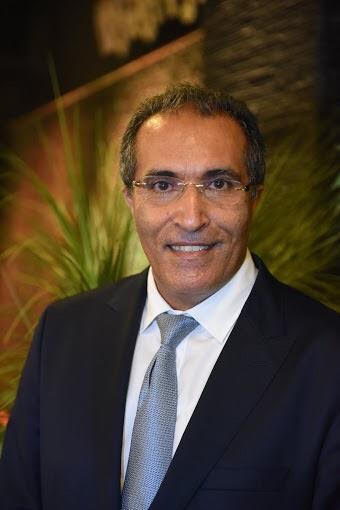
International Journal of Clinical Case Reports and Reviews. I strongly recommend to consider submitting your work to this high-quality journal. The support and availability of the Editorial staff is outstanding and the review process was both efficient and rigorous.

Thank you very much for publishing my Research Article titled “Comparing Treatment Outcome Of Allergic Rhinitis Patients After Using Fluticasone Nasal Spray And Nasal Douching" in the Journal of Clinical Otorhinolaryngology. As Medical Professionals we are immensely benefited from study of various informative Articles and Papers published in this high quality Journal. I look forward to enriching my knowledge by regular study of the Journal and contribute my future work in the field of ENT through the Journal for use by the medical fraternity. The support from the Editorial office was excellent and very prompt. I also welcome the comments received from the readers of my Research Article.

Dear Erica Kelsey, Editorial Coordinator of Cancer Research and Cellular Therapeutics Our team is very satisfied with the processing of our paper by your journal. That was fast, efficient, rigorous, but without unnecessary complications. We appreciated the very short time between the submission of the paper and its publication on line on your site.

I am very glad to say that the peer review process is very successful and fast and support from the Editorial Office. Therefore, I would like to continue our scientific relationship for a long time. And I especially thank you for your kindly attention towards my article. Have a good day!

"We recently published an article entitled “Influence of beta-Cyclodextrins upon the Degradation of Carbofuran Derivatives under Alkaline Conditions" in the Journal of “Pesticides and Biofertilizers” to show that the cyclodextrins protect the carbamates increasing their half-life time in the presence of basic conditions This will be very helpful to understand carbofuran behaviour in the analytical, agro-environmental and food areas. We greatly appreciated the interaction with the editor and the editorial team; we were particularly well accompanied during the course of the revision process, since all various steps towards publication were short and without delay".

I would like to express my gratitude towards you process of article review and submission. I found this to be very fair and expedient. Your follow up has been excellent. I have many publications in national and international journal and your process has been one of the best so far. Keep up the great work.

We are grateful for this opportunity to provide a glowing recommendation to the Journal of Psychiatry and Psychotherapy. We found that the editorial team were very supportive, helpful, kept us abreast of timelines and over all very professional in nature. The peer review process was rigorous, efficient and constructive that really enhanced our article submission. The experience with this journal remains one of our best ever and we look forward to providing future submissions in the near future.

I am very pleased to serve as EBM of the journal, I hope many years of my experience in stem cells can help the journal from one way or another. As we know, stem cells hold great potential for regenerative medicine, which are mostly used to promote the repair response of diseased, dysfunctional or injured tissue using stem cells or their derivatives. I think Stem Cell Research and Therapeutics International is a great platform to publish and share the understanding towards the biology and translational or clinical application of stem cells.

I would like to give my testimony in the support I have got by the peer review process and to support the editorial office where they were of asset to support young author like me to be encouraged to publish their work in your respected journal and globalize and share knowledge across the globe. I really give my great gratitude to your journal and the peer review including the editorial office.

I am delighted to publish our manuscript entitled "A Perspective on Cocaine Induced Stroke - Its Mechanisms and Management" in the Journal of Neuroscience and Neurological Surgery. The peer review process, support from the editorial office, and quality of the journal are excellent. The manuscripts published are of high quality and of excellent scientific value. I recommend this journal very much to colleagues.
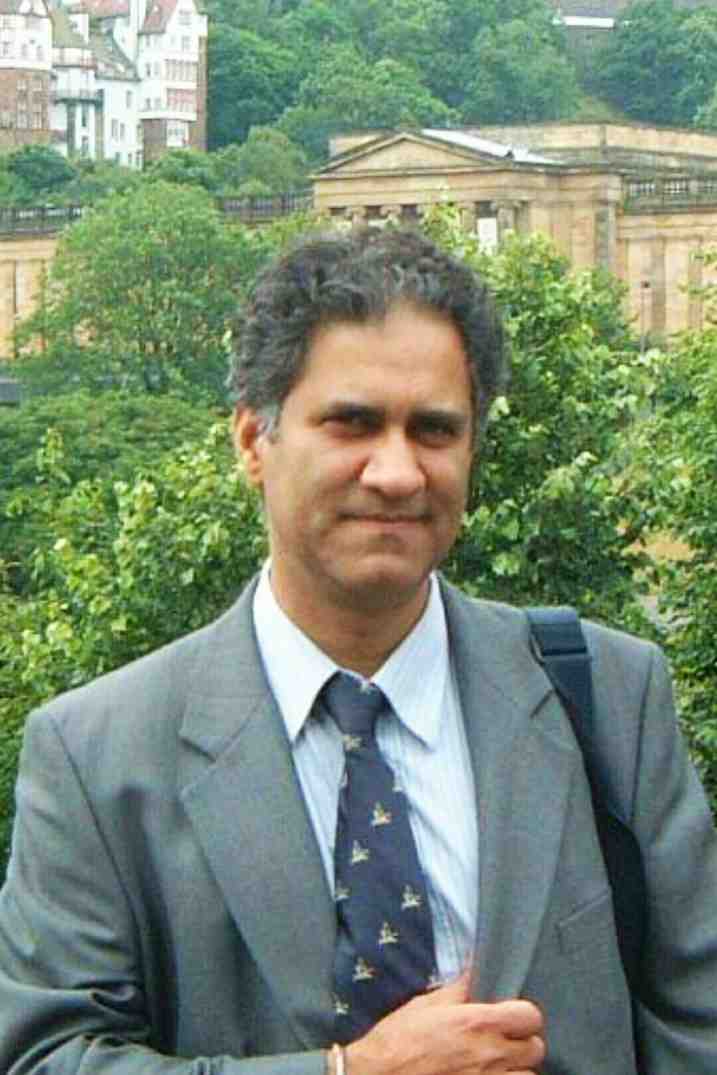
Dr.Tania Muñoz, My experience as researcher and author of a review article in The Journal Clinical Cardiology and Interventions has been very enriching and stimulating. The editorial team is excellent, performs its work with absolute responsibility and delivery. They are proactive, dynamic and receptive to all proposals. Supporting at all times the vast universe of authors who choose them as an option for publication. The team of review specialists, members of the editorial board, are brilliant professionals, with remarkable performance in medical research and scientific methodology. Together they form a frontline team that consolidates the JCCI as a magnificent option for the publication and review of high-level medical articles and broad collective interest. I am honored to be able to share my review article and open to receive all your comments.

“The peer review process of JPMHC is quick and effective. Authors are benefited by good and professional reviewers with huge experience in the field of psychology and mental health. The support from the editorial office is very professional. People to contact to are friendly and happy to help and assist any query authors might have. Quality of the Journal is scientific and publishes ground-breaking research on mental health that is useful for other professionals in the field”.

Dear editorial department: On behalf of our team, I hereby certify the reliability and superiority of the International Journal of Clinical Case Reports and Reviews in the peer review process, editorial support, and journal quality. Firstly, the peer review process of the International Journal of Clinical Case Reports and Reviews is rigorous, fair, transparent, fast, and of high quality. The editorial department invites experts from relevant fields as anonymous reviewers to review all submitted manuscripts. These experts have rich academic backgrounds and experience, and can accurately evaluate the academic quality, originality, and suitability of manuscripts. The editorial department is committed to ensuring the rigor of the peer review process, while also making every effort to ensure a fast review cycle to meet the needs of authors and the academic community. Secondly, the editorial team of the International Journal of Clinical Case Reports and Reviews is composed of a group of senior scholars and professionals with rich experience and professional knowledge in related fields. The editorial department is committed to assisting authors in improving their manuscripts, ensuring their academic accuracy, clarity, and completeness. Editors actively collaborate with authors, providing useful suggestions and feedback to promote the improvement and development of the manuscript. We believe that the support of the editorial department is one of the key factors in ensuring the quality of the journal. Finally, the International Journal of Clinical Case Reports and Reviews is renowned for its high- quality articles and strict academic standards. The editorial department is committed to publishing innovative and academically valuable research results to promote the development and progress of related fields. The International Journal of Clinical Case Reports and Reviews is reasonably priced and ensures excellent service and quality ratio, allowing authors to obtain high-level academic publishing opportunities in an affordable manner. I hereby solemnly declare that the International Journal of Clinical Case Reports and Reviews has a high level of credibility and superiority in terms of peer review process, editorial support, reasonable fees, and journal quality. Sincerely, Rui Tao.

Clinical Cardiology and Cardiovascular Interventions I testity the covering of the peer review process, support from the editorial office, and quality of the journal.

Clinical Cardiology and Cardiovascular Interventions, we deeply appreciate the interest shown in our work and its publication. It has been a true pleasure to collaborate with you. The peer review process, as well as the support provided by the editorial office, have been exceptional, and the quality of the journal is very high, which was a determining factor in our decision to publish with you.
The peer reviewers process is quick and effective, the supports from editorial office is excellent, the quality of journal is high. I would like to collabroate with Internatioanl journal of Clinical Case Reports and Reviews journal clinically in the future time.

Clinical Cardiology and Cardiovascular Interventions, I would like to express my sincerest gratitude for the trust placed in our team for the publication in your journal. It has been a true pleasure to collaborate with you on this project. I am pleased to inform you that both the peer review process and the attention from the editorial coordination have been excellent. Your team has worked with dedication and professionalism to ensure that your publication meets the highest standards of quality. We are confident that this collaboration will result in mutual success, and we are eager to see the fruits of this shared effort.

Dear Dr. Jessica Magne, Editorial Coordinator 0f Clinical Cardiology and Cardiovascular Interventions, I hope this message finds you well. I want to express my utmost gratitude for your excellent work and for the dedication and speed in the publication process of my article titled "Navigating Innovation: Qualitative Insights on Using Technology for Health Education in Acute Coronary Syndrome Patients." I am very satisfied with the peer review process, the support from the editorial office, and the quality of the journal. I hope we can maintain our scientific relationship in the long term.
Dear Monica Gissare, - Editorial Coordinator of Nutrition and Food Processing. ¨My testimony with you is truly professional, with a positive response regarding the follow-up of the article and its review, you took into account my qualities and the importance of the topic¨.

Dear Dr. Jessica Magne, Editorial Coordinator 0f Clinical Cardiology and Cardiovascular Interventions, The review process for the article “The Handling of Anti-aggregants and Anticoagulants in the Oncologic Heart Patient Submitted to Surgery” was extremely rigorous and detailed. From the initial submission to the final acceptance, the editorial team at the “Journal of Clinical Cardiology and Cardiovascular Interventions” demonstrated a high level of professionalism and dedication. The reviewers provided constructive and detailed feedback, which was essential for improving the quality of our work. Communication was always clear and efficient, ensuring that all our questions were promptly addressed. The quality of the “Journal of Clinical Cardiology and Cardiovascular Interventions” is undeniable. It is a peer-reviewed, open-access publication dedicated exclusively to disseminating high-quality research in the field of clinical cardiology and cardiovascular interventions. The journal's impact factor is currently under evaluation, and it is indexed in reputable databases, which further reinforces its credibility and relevance in the scientific field. I highly recommend this journal to researchers looking for a reputable platform to publish their studies.

Dear Editorial Coordinator of the Journal of Nutrition and Food Processing! "I would like to thank the Journal of Nutrition and Food Processing for including and publishing my article. The peer review process was very quick, movement and precise. The Editorial Board has done an extremely conscientious job with much help, valuable comments and advices. I find the journal very valuable from a professional point of view, thank you very much for allowing me to be part of it and I would like to participate in the future!”

Dealing with The Journal of Neurology and Neurological Surgery was very smooth and comprehensive. The office staff took time to address my needs and the response from editors and the office was prompt and fair. I certainly hope to publish with this journal again.Their professionalism is apparent and more than satisfactory. Susan Weiner

My Testimonial Covering as fellowing: Lin-Show Chin. The peer reviewers process is quick and effective, the supports from editorial office is excellent, the quality of journal is high. I would like to collabroate with Internatioanl journal of Clinical Case Reports and Reviews.

My experience publishing in Psychology and Mental Health Care was exceptional. The peer review process was rigorous and constructive, with reviewers providing valuable insights that helped enhance the quality of our work. The editorial team was highly supportive and responsive, making the submission process smooth and efficient. The journal's commitment to high standards and academic rigor makes it a respected platform for quality research. I am grateful for the opportunity to publish in such a reputable journal.
My experience publishing in International Journal of Clinical Case Reports and Reviews was exceptional. I Come forth to Provide a Testimonial Covering the Peer Review Process and the editorial office for the Professional and Impartial Evaluation of the Manuscript.

I would like to offer my testimony in the support. I have received through the peer review process and support the editorial office where they are to support young authors like me, encourage them to publish their work in your esteemed journals, and globalize and share knowledge globally. I really appreciate your journal, peer review, and editorial office.
Dear Agrippa Hilda- Editorial Coordinator of Journal of Neuroscience and Neurological Surgery, "The peer review process was very quick and of high quality, which can also be seen in the articles in the journal. The collaboration with the editorial office was very good."

I would like to express my sincere gratitude for the support and efficiency provided by the editorial office throughout the publication process of my article, “Delayed Vulvar Metastases from Rectal Carcinoma: A Case Report.” I greatly appreciate the assistance and guidance I received from your team, which made the entire process smooth and efficient. The peer review process was thorough and constructive, contributing to the overall quality of the final article. I am very grateful for the high level of professionalism and commitment shown by the editorial staff, and I look forward to maintaining a long-term collaboration with the International Journal of Clinical Case Reports and Reviews.
To Dear Erin Aust, I would like to express my heartfelt appreciation for the opportunity to have my work published in this esteemed journal. The entire publication process was smooth and well-organized, and I am extremely satisfied with the final result. The Editorial Team demonstrated the utmost professionalism, providing prompt and insightful feedback throughout the review process. Their clear communication and constructive suggestions were invaluable in enhancing my manuscript, and their meticulous attention to detail and dedication to quality are truly commendable. Additionally, the support from the Editorial Office was exceptional. From the initial submission to the final publication, I was guided through every step of the process with great care and professionalism. The team's responsiveness and assistance made the entire experience both easy and stress-free. I am also deeply impressed by the quality and reputation of the journal. It is an honor to have my research featured in such a respected publication, and I am confident that it will make a meaningful contribution to the field.

"I am grateful for the opportunity of contributing to [International Journal of Clinical Case Reports and Reviews] and for the rigorous review process that enhances the quality of research published in your esteemed journal. I sincerely appreciate the time and effort of your team who have dedicatedly helped me in improvising changes and modifying my manuscript. The insightful comments and constructive feedback provided have been invaluable in refining and strengthening my work".
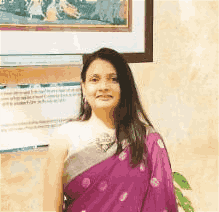
I thank the ‘Journal of Clinical Research and Reports’ for accepting this article for publication. This is a rigorously peer reviewed journal which is on all major global scientific data bases. I note the review process was prompt, thorough and professionally critical. It gave us an insight into a number of important scientific/statistical issues. The review prompted us to review the relevant literature again and look at the limitations of the study. The peer reviewers were open, clear in the instructions and the editorial team was very prompt in their communication. This journal certainly publishes quality research articles. I would recommend the journal for any future publications.

Dear Jessica Magne, with gratitude for the joint work. Fast process of receiving and processing the submitted scientific materials in “Clinical Cardiology and Cardiovascular Interventions”. High level of competence of the editors with clear and correct recommendations and ideas for enriching the article.

We found the peer review process quick and positive in its input. The support from the editorial officer has been very agile, always with the intention of improving the article and taking into account our subsequent corrections.

My article, titled 'No Way Out of the Smartphone Epidemic Without Considering the Insights of Brain Research,' has been republished in the International Journal of Clinical Case Reports and Reviews. The review process was seamless and professional, with the editors being both friendly and supportive. I am deeply grateful for their efforts.
To Dear Erin Aust – Editorial Coordinator of Journal of General Medicine and Clinical Practice! I declare that I am absolutely satisfied with your work carried out with great competence in following the manuscript during the various stages from its receipt, during the revision process to the final acceptance for publication. Thank Prof. Elvira Farina

Dear Jessica, and the super professional team of the ‘Clinical Cardiology and Cardiovascular Interventions’ I am sincerely grateful to the coordinated work of the journal team for the no problem with the submission of my manuscript: “Cardiometabolic Disorders in A Pregnant Woman with Severe Preeclampsia on the Background of Morbid Obesity (Case Report).” The review process by 5 experts was fast, and the comments were professional, which made it more specific and academic, and the process of publication and presentation of the article was excellent. I recommend that my colleagues publish articles in this journal, and I am interested in further scientific cooperation. Sincerely and best wishes, Dr. Oleg Golyanovskiy.
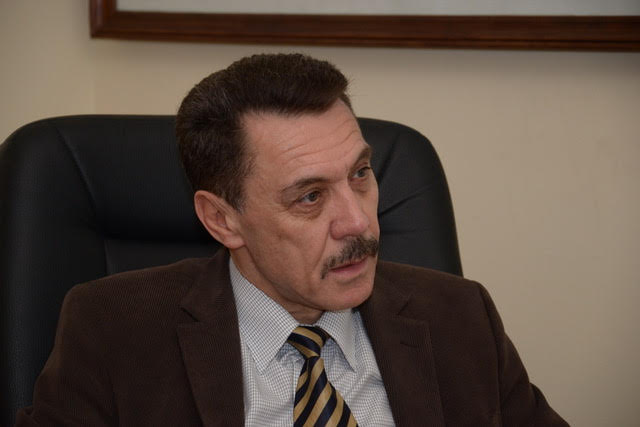
Dear Ashley Rosa, Editorial Coordinator of the journal - Psychology and Mental Health Care. " The process of obtaining publication of my article in the Psychology and Mental Health Journal was positive in all areas. The peer review process resulted in a number of valuable comments, the editorial process was collaborative and timely, and the quality of this journal has been quickly noticed, resulting in alternative journals contacting me to publish with them." Warm regards, Susan Anne Smith, PhD. Australian Breastfeeding Association.

Dear Jessica Magne, Editorial Coordinator, Clinical Cardiology and Cardiovascular Interventions, Auctores Publishing LLC. I appreciate the journal (JCCI) editorial office support, the entire team leads were always ready to help, not only on technical front but also on thorough process. Also, I should thank dear reviewers’ attention to detail and creative approach to teach me and bring new insights by their comments. Surely, more discussions and introduction of other hemodynamic devices would provide better prevention and management of shock states. Your efforts and dedication in presenting educational materials in this journal are commendable. Best wishes from, Farahnaz Fallahian.
Dear Maria Emerson, Editorial Coordinator, International Journal of Clinical Case Reports and Reviews, Auctores Publishing LLC. I am delighted to have published our manuscript, "Acute Colonic Pseudo-Obstruction (ACPO): A rare but serious complication following caesarean section." I want to thank the editorial team, especially Maria Emerson, for their prompt review of the manuscript, quick responses to queries, and overall support. Yours sincerely Dr. Victor Olagundoye.

Dear Ashley Rosa, Editorial Coordinator, International Journal of Clinical Case Reports and Reviews. Many thanks for publishing this manuscript after I lost confidence the editors were most helpful, more than other journals Best wishes from, Susan Anne Smith, PhD. Australian Breastfeeding Association.

Dear Agrippa Hilda, Editorial Coordinator, Journal of Neuroscience and Neurological Surgery. The entire process including article submission, review, revision, and publication was extremely easy. The journal editor was prompt and helpful, and the reviewers contributed to the quality of the paper. Thank you so much! Eric Nussbaum, MD
Dr Hala Al Shaikh This is to acknowledge that the peer review process for the article ’ A Novel Gnrh1 Gene Mutation in Four Omani Male Siblings, Presentation and Management ’ sent to the International Journal of Clinical Case Reports and Reviews was quick and smooth. The editorial office was prompt with easy communication.

Dear Erin Aust, Editorial Coordinator, Journal of General Medicine and Clinical Practice. We are pleased to share our experience with the “Journal of General Medicine and Clinical Practice”, following the successful publication of our article. The peer review process was thorough and constructive, helping to improve the clarity and quality of the manuscript. We are especially thankful to Ms. Erin Aust, the Editorial Coordinator, for her prompt communication and continuous support throughout the process. Her professionalism ensured a smooth and efficient publication experience. The journal upholds high editorial standards, and we highly recommend it to fellow researchers seeking a credible platform for their work. Best wishes By, Dr. Rakhi Mishra.

Dear Jessica Magne, Editorial Coordinator, Clinical Cardiology and Cardiovascular Interventions, Auctores Publishing LLC. The peer review process of the journal of Clinical Cardiology and Cardiovascular Interventions was excellent and fast, as was the support of the editorial office and the quality of the journal. Kind regards Walter F. Riesen Prof. Dr. Dr. h.c. Walter F. Riesen.

Dear Ashley Rosa, Editorial Coordinator, International Journal of Clinical Case Reports and Reviews, Auctores Publishing LLC. Thank you for publishing our article, Exploring Clozapine's Efficacy in Managing Aggression: A Multiple Single-Case Study in Forensic Psychiatry in the international journal of clinical case reports and reviews. We found the peer review process very professional and efficient. The comments were constructive, and the whole process was efficient. On behalf of the co-authors, I would like to thank you for publishing this article. With regards, Dr. Jelle R. Lettinga.

Dear Clarissa Eric, Editorial Coordinator, Journal of Clinical Case Reports and Studies, I would like to express my deep admiration for the exceptional professionalism demonstrated by your journal. I am thoroughly impressed by the speed of the editorial process, the substantive and insightful reviews, and the meticulous preparation of the manuscript for publication. Additionally, I greatly appreciate the courteous and immediate responses from your editorial office to all my inquiries. Best Regards, Dariusz Ziora

Dear Chrystine Mejia, Editorial Coordinator, Journal of Neurodegeneration and Neurorehabilitation, Auctores Publishing LLC, We would like to thank the editorial team for the smooth and high-quality communication leading up to the publication of our article in the Journal of Neurodegeneration and Neurorehabilitation. The reviewers have extensive knowledge in the field, and their relevant questions helped to add value to our publication. Kind regards, Dr. Ravi Shrivastava.

Dear Clarissa Eric, Editorial Coordinator, Journal of Clinical Case Reports and Studies, Auctores Publishing LLC, USA Office: +1-(302)-520-2644. I would like to express my sincere appreciation for the efficient and professional handling of my case report by the ‘Journal of Clinical Case Reports and Studies’. The peer review process was not only fast but also highly constructive—the reviewers’ comments were clear, relevant, and greatly helped me improve the quality and clarity of my manuscript. I also received excellent support from the editorial office throughout the process. Communication was smooth and timely, and I felt well guided at every stage, from submission to publication. The overall quality and rigor of the journal are truly commendable. I am pleased to have published my work with Journal of Clinical Case Reports and Studies, and I look forward to future opportunities for collaboration. Sincerely, Aline Tollet, UCLouvain.

Dear Ms. Mayra Duenas, Editorial Coordinator, International Journal of Clinical Case Reports and Reviews. “The International Journal of Clinical Case Reports and Reviews represented the “ideal house” to share with the research community a first experience with the use of the Simeox device for speech rehabilitation. High scientific reputation and attractive website communication were first determinants for the selection of this Journal, and the following submission process exceeded expectations: fast but highly professional peer review, great support by the editorial office, elegant graphic layout. Exactly what a dynamic research team - also composed by allied professionals - needs!" From, Chiara Beccaluva, PT - Italy.

Dear Maria Emerson, Editorial Coordinator, we have deeply appreciated the professionalism demonstrated by the International Journal of Clinical Case Reports and Reviews. The reviewers have extensive knowledge of our field and have been very efficient and fast in supporting the process. I am really looking forward to further collaboration. Thanks. Best regards, Dr. Claudio Ligresti
Dear Chrystine Mejia, Editorial Coordinator, Journal of Neurodegeneration and Neurorehabilitation. “The peer review process was efficient and constructive, and the editorial office provided excellent communication and support throughout. The journal ensures scientific rigor and high editorial standards, while also offering a smooth and timely publication process. We sincerely appreciate the work of the editorial team in facilitating the dissemination of innovative approaches such as the Bonori Method.” Best regards, Dr. Matteo Bonori.

I recommend without hesitation submitting relevant papers on medical decision making to the International Journal of Clinical Case Reports and Reviews. I am very grateful to the editorial staff. Maria Emerson was a pleasure to communicate with. The time from submission to publication was an extremely short 3 weeks. The editorial staff submitted the paper to three reviewers. Two of the reviewers commented positively on the value of publishing the paper. The editorial staff quickly recognized the third reviewer’s comments as an unjust attempt to reject the paper. I revised the paper as recommended by the first two reviewers.

Dear Maria Emerson, Editorial Coordinator, Journal of Clinical Research and Reports. Thank you for publishing our case report: "Clinical Case of Effective Fetal Stem Cells Treatment in a Patient with Autism Spectrum Disorder" within the "Journal of Clinical Research and Reports" being submitted by the team of EmCell doctors from Kyiv, Ukraine. We much appreciate a professional and transparent peer-review process from Auctores. All research Doctors are so grateful to your Editorial Office and Auctores Publishing support! I amiably wish our article publication maintained a top quality of your International Scientific Journal. My best wishes for a prosperity of the Journal of Clinical Research and Reports. Hope our scientific relationship and cooperation will remain long lasting. Thank you very much indeed. Kind regards, Dr. Andriy Sinelnyk Cell Therapy Center EmCell
